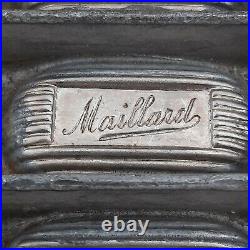
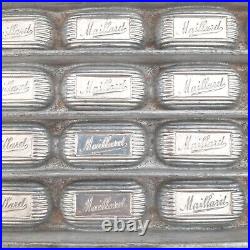
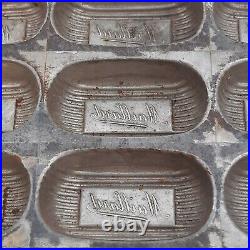

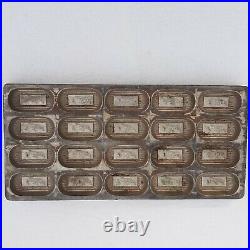


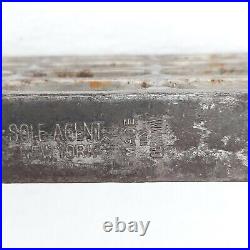
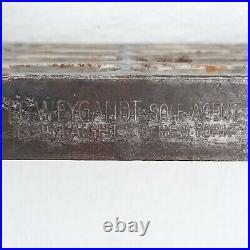
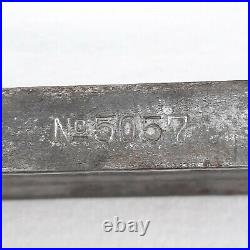
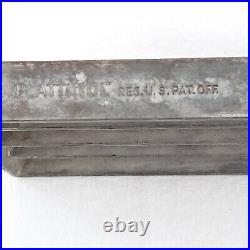
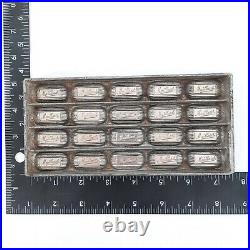

Henri Maillard came to New York City from France in the 1840s bringing with him a bit of Paris represented in the pots and pans and fancy moulds he used as a chocolatier. It wasn’t long before he added a catering department to his confectionery at Broadway and Houston. He let the public know he was ready to produce meringues, Charlotte Russes, jellies and ice creams for balls and parties, as well as provide dinners by reservation on his premises. His fame spread beyond New York, leading him to cater an inaugural ball and grand dinners at the Lincoln White House. In 1878 he took the gold medal at the Paris Universal Exposition at which he exhibited solid chocolate statues and vases weighing from 100 to 180 pounds each and a catalog of 3,000 candies. This is an Anton Reiche Dresden Germany piece according to the makers mark on the edge. It is also labeled T. Weygandt, Sole Agent, 13-15 Laight St. The Plattinol is documented in historical documents to be a mold that is nickel coated sheet metal. The Plattinol mold is also alleged to have not been created until at least 1888. This piece is from approximately the 1890’s. Some corrosion as shown. Please review all the pictures to see the beautiful condition of this historical legacy piece that tells the story of Maillard. Below is more of the provenance of the Maillard Company and the origin of this very unique mold. For the 1876 World’s Fair in Philadelphia, Maillard showcased an astonishing confection display that fit well into the theme of the Centennial Exposition. Towering in the center of the case was a 15-foot’monument of white sugar and chocolate’ depicting episodes in American history, including America’s first victory of the Revolution-the capture of Fort Ticonderoga by Ethan Allen, Benedict Arnold, and the Green Mountain Boys, an event that occurred exactly a century to the day before the Exposition opened. [Westbrook, 200] At the 1893 World’s Columbian Exposition, Maillard showed his sweets in a nearly 1,000-square-foot display space in the Agricultural Building. The company exhibited confectionery under the Exposition classification of Department A. Agriculture in Group 3 Sugars, Syrups, Confectionery, Etc. And exhibited cocoa and chocolate in Group 8 Tea, Coffee, Spices, Hops, and Aromatic and Vegetable Substances. [Handy, 510] The show-stopper in the Maillard gallery was a trio of enormous chocolate sculptures.

